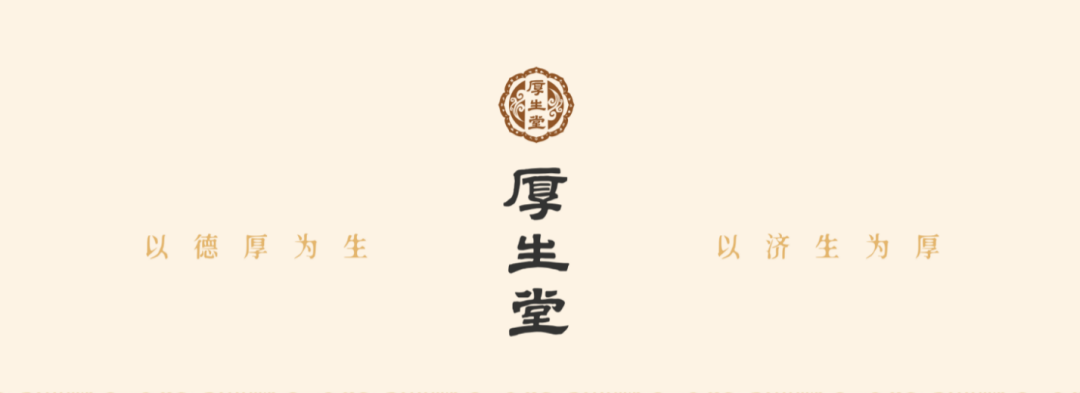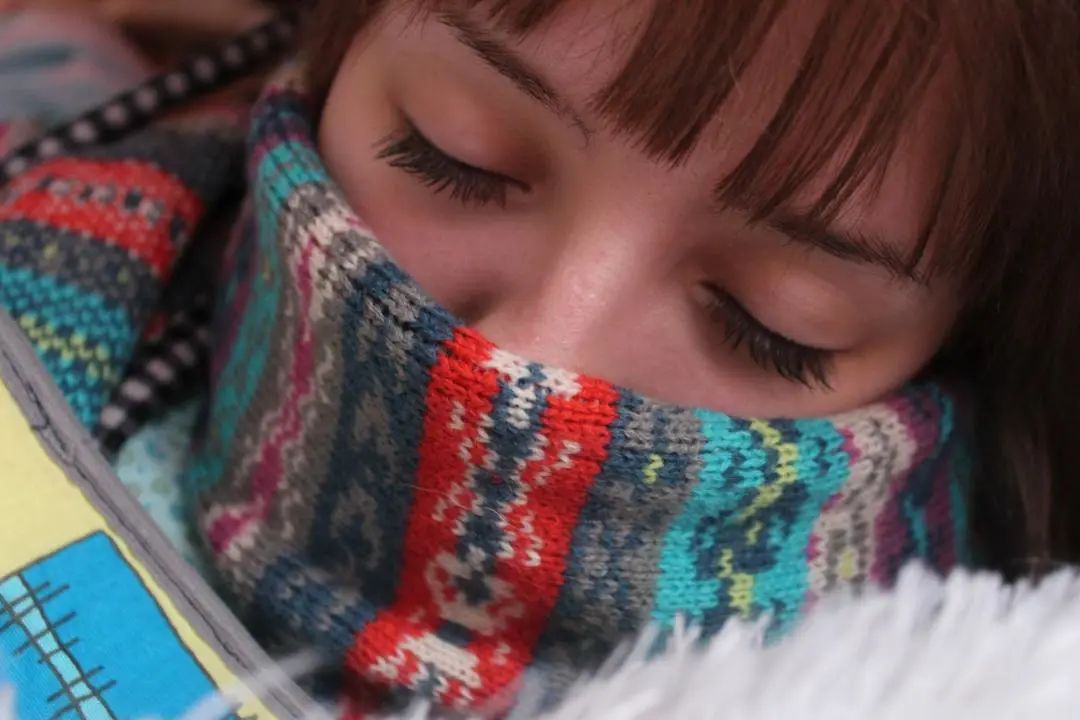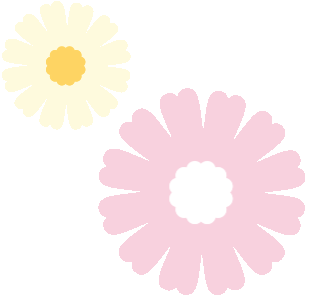
【Common Symptoms】Severe chills, mild fever, no sweating, headache, body aches, nasal congestion with a heavy voice, or itchy nose with sneezing, occasional clear nasal discharge, itchy throat, cough with thin white phlegm, no thirst or preference for hot drinks, thin white and moist tongue coating, floating or tight pulse。
People often say that they recognize these as symptoms of Wind-Cold Cold, but when it comes to being sick, they still cannot differentiate the patterns. Therefore, we will explain each of these symptoms one by one to help everyone understand. Once you grasp the story behind each symptom, you will naturally be able to differentiate the patterns.

Severe Chills
Why does Wind-Cold Cold present with chills? This is because the body is very wise; when it is invaded by wind and cold, it quickly reacts by closing the pores to prevent more cold evil from entering. While this self-defense mechanism is correct, it also creates another problem: it traps the already invading Wind Evil and Cold Evil at our surface. The wind and cold cannot escape and remain trapped between the skin and the muscle layers, causing us to feel cold and even shiver.
Therefore, if chills occur after catching a cold, it indicates that cold evil is lingering at the surface, and we need to use exterior-releasing and cold-dispersing herbs (whether it is a wind-cold or wind-heat cold, chills can occur due to simultaneous invasion of cold and heat).
Fever
Fever is what we commonly refer to as a high temperature. So why does fever occur? Some doctors say it is because cold has entered and transformed into heat. However, this raises the question: how can cold evil transform into heat once it enters the body? What is this transformation, and can it be explained?
Fever is not caused by cold evil transforming into heat; rather, it is our body’s righteous qi fighting against the cold evil, leading to a battle! It is like an enemy breaking through the city gates, and we accidentally trap them inside. The only outcome is a fight, a struggle between the enemy and us.
Who is on our side? Naturally, it is the righteous qi in our body, with qi, blood, and body fluids being the main combat forces.
On one hand, as the two sides battle, the blood boils, and the resistance of qi and blood causes the body temperature to rise naturally, as energy is mobilized to join the fight. Therefore, fever itself is a result of the struggle between righteousness and evil and is not something to fear. Modern medicine also emphasizes that fever is not a bad thing; it is a means of enhancing the body’s self-defense capabilities, akin to military training.
Many physicians have stated that those who never experience fever do not necessarily have good health; many actually have weak resistance. Why? Because the disparity in strength between righteousness and evil is too great, they cannot engage in battle. The enemy is trapped inside, but our soldiers are too weak to resist, resulting in the enemy advancing directly into the body, bypassing the fever stage.
Children, once they catch a cold, are very prone to fever, even high fever, due to their strong righteous qi and sensitive bodies. Therefore, the symptom of fever upon catching a cold is common in children.
On the other hand, from the body’s perspective, after cold evil invades, the body’s pores close, and the heat that should be dispersed inside is also trapped, preventing it from escaping, which similarly leads to an increase in body temperature.
Thus, when we experience fever symptoms after catching a cold, do not panic; this is a battle between righteousness and evil. We should not rush to use medication to reduce the fever but rather use herbs to replenish righteous qi while opening the pores to allow the evil qi to escape. Once our side is strong and the enemy has an escape route, they will naturally be defeated, and the battle will end.
It is important to emphasize that in TCM, the most crucial point in treating fever is to provide an escape route for the evil qi. TCM treatment emphasizes harmony and aims to minimize damage, including damage to righteous qi.
In a battle between righteousness and evil, if we kill ten thousand enemies but lose eight thousand of our own, this outcome is not the best, as it causes too much harm to ourselves. Our goal in treating illness is simply to restore the body to normal as quickly as possible, not to kill the evil. Therefore, it is sufficient to drive them away without engaging in overly intense conflict.
Currently, the practice of using antibiotics at the first sign of fever is essentially “killing ten thousand enemies while losing ten thousand of our own”. A large amount of cold and cooling antibiotics introduced into the body can indeed lower the body temperature in a short time, but that does not expel the evil; it is like a sudden cold rain falling from the sky, temporarily knocking both sides down.
Once the rain passes, righteousness and evil will rise again to fight, leading to recurrent high fever symptoms. The evil qi remains, while the righteous qi is weakened. The reduction of fever after several episodes is not due to the expulsion of evil qi but rather because the righteous qi has lost its power to resist. At this point, the remnants of the evil qi will infiltrate the body and cause further damage.
The lungs are delicate organs and are most susceptible to the invasion of evil qi. Therefore, the reduction of fever after using antibiotics is most likely to lead to lung diseases, such as hoarseness, cough, asthma, and even pneumonia, which can be prolonged and difficult to cure.
No Sweating
After the body feels external evil, it quickly closes the pores for self-preservation, preventing both heat and cold from escaping, resulting in no sweating. Therefore, when we observe no sweating, we should understand that the pores are still closed and need to be released. Only by opening the pores can the evil qi be expelled along with the sweat.
The lungs govern the skin and hair. The lung’s dispersing function, in addition to breathing through the mouth and nose, also exchanges gases with nature through the body’s pores. The so-called exterior-releasing actually assists the lungs in restoring their dispersing function. For example, Ma Huang (Ephedra), Zi Su Ye (Perilla Leaf), or Sheng Jiang (Fresh Ginger) are commonly used herbs that can help open the pores.
Headache and Body Aches
Cold evil has the characteristics of stagnation and contraction; cold can cause blood stasis, and cold can obstruct the meridians, both of which are manifestations of cold evil stagnation. If cold evil accumulates in the head or joints, symptoms of qi and blood obstruction will appear, leading to pain. Therefore, when treating cold-related headaches and body aches, there is often no need to add any additional pain-relieving medications; simply resolving the exterior cold will naturally alleviate the pain.
Nasal Congestion and Runny Nose
The lungs open to the nose and are delicate organs, so when evil qi enters through the mouth and nose, the first organ to be attacked is the lungs. The lungs need to expel the evil qi, but since the pores are closed, they can only expel the cold through the nose, resulting in a runny nose. Therefore, when experiencing a runny nose, we should not use medication to stop it, as this would block the body’s route for expelling evil. What we need to do is drive the evil out; once the evil qi is gone, the runny nose will naturally stop.
The reason for nasal congestion is primarily due to the upward reversal of lung qi. Lung qi is supposed to descend, but when the lungs are damaged, their dispersing and descending functions are affected, causing the qi that should descend to instead rise, leading to symptoms of lung qi stagnation in the nasal area.

Itchy Throat
Itchy throat generally indicates wind. This means that it plays a role not only as a carrier of cold evil but also as a major component of evil qi. Therefore, while using herbs to release the exterior and disperse cold, we also need to disperse wind. Many cold medications contain herbs that disperse wind, such as Fang Feng (Siler Root), Jing Jie (Schizonepeta), and Bai Zhi (Angelica Dahurica).
Cough
How to distinguish whether it is a cold cough? Here are a few methods: First, go outside and observe whether coughing worsens after being exposed to cold wind. If it worsens, it may be a cold cough; if it does not worsen and instead feels more comfortable, it may be a heat cough. Second, look at the phlegm; if the phlegm is clear and thin or white, it mostly indicates a cold cough. Third, observe the tongue coating; if the tongue is not red and has a thin white coating during coughing, it is also likely a cold cough.
No Thirst or Preference for Hot Drinks
No thirst is because the body fluids have not been depleted. Generally speaking, patients with cold syndrome have a low body temperature and do not burn the body fluids, so they naturally do not feel thirsty. Even if they do feel thirsty, they prefer hot water over cold water. However, it is important to note that if fever persists and body temperature rises, depleting body fluids, thirst may occur, which is a manifestation of fluid deficiency.
Tongue Coating
In cases of cold syndrome, the tongue coating is often white, indicating the presence of cold qi. It may be thin white or thick white.
Floating and Tight Pulse
The so-called floating and tight pulse refers to feeling the pulse lightly, especially on the right hand, where the pulse can be distinctly felt as strong and fast, very tense, as if it is floating on the surface of the skin, hence the term floating pulse. This indicates that evil qi is at the surface.
Understanding the meanings behind these symptoms can help us analyze the condition more thoroughly and identify the location of the illness, serving as an important reference for pattern differentiation and treatment. As long as the differentiation is correct, the treatment approach, direction, and medication will follow suit, leading to effective recovery.
【Treatment Principle】Spicy and Warm Exterior-Releasing.
This means using spicy, dispersing, and warming herbs to drive out cold evil.
 Have you learned today’s knowledge?You can message us below for more inquiries.
Have you learned today’s knowledge?You can message us below for more inquiries. ENDYou might also want to readWhat exactly is a cold? TCM explains it clearly. 【Parent TCM Classroom】 Pediatric Observation of “Observing the Miao Qiao” (Part 1)
ENDYou might also want to readWhat exactly is a cold? TCM explains it clearly. 【Parent TCM Classroom】 Pediatric Observation of “Observing the Miao Qiao” (Part 1)
Three types of food aversion in children, see which type your child is?
“Yin and Yang” is very mysterious and hard to understand? A quick article to get you started in TCM. Why do children’s coughs persist despite treatment? Four key points to remember.
What to do if your child hasn’t had a bowel movement for three days? Experts can solve it in just two steps!

 “Like” and “View” to stay connected!
“Like” and “View” to stay connected!

